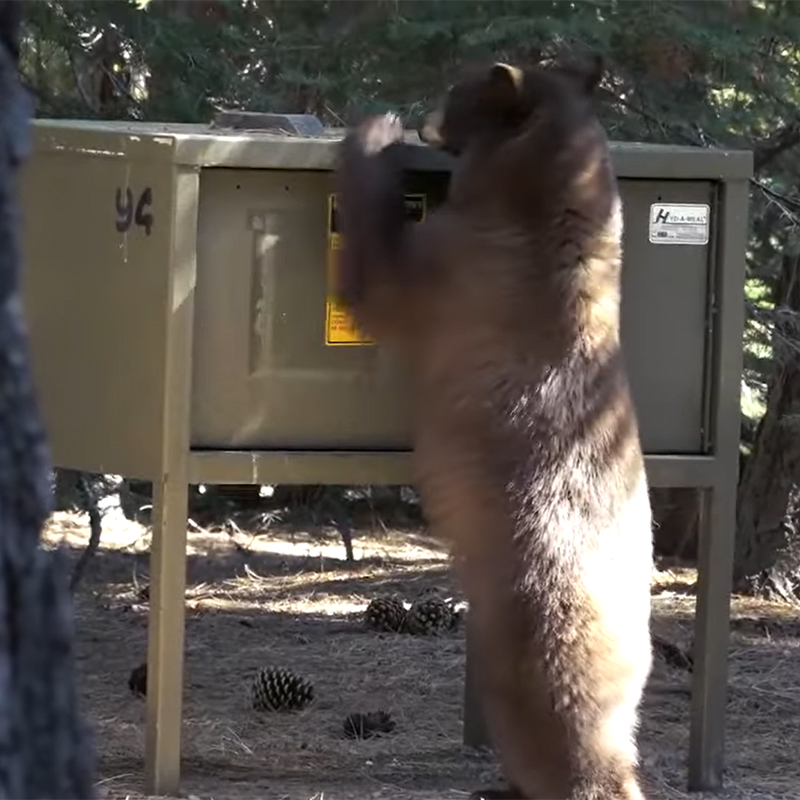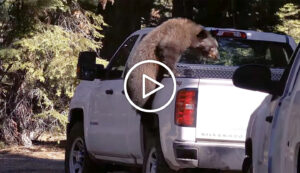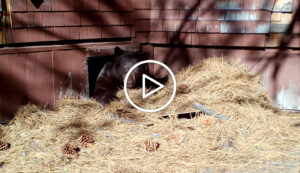Fall colors and cooler temperatures in Tahoe mean black bear behavior is also changing
In the Tahoe Basin, the changing leaves and cooler temperatures can only mean one thing – fall is here. With the transition of the seasons, bears are changing their behavior as well.
In the fall, black bears enter a temporary physiological state known as “hyperphagia.” During hyperphagia, known colloquially as the fall feeding frenzy, bears consume as much as they can to bring their fat stores to a level where they can survive the quickly approaching winter months. In the fall, an adult bear can consume 20,000 to 24,000 calories a day and can gain multiple pounds per day.
To achieve this rapid growth in fat stores, wild bears can be seen foraging most of the day and night and may travel beyond their normal home range in search of food. The increased drive for food can lead bears to seek easy, calorie-dense meals in residential areas if food, garbage, and recycling are not properly stored. To keep our Tahoe bears wild while they bulk up for the winter, the Tahoe Interagency Bear Team wants to remind residents to stick to BearWise principles by using bear-resistant garbage carts/boxes, removing bird feeders, storing pet food inside, and cleaning grills regularly. Watch this video to learn more.
After the fall feeding frenzy, food supplies begin to dwindle, signaling to the bears it is time to find a den for hibernation. In the wild, bears will den beneath rock piles or hollowed trees. However, in the Tahoe Basin, many bears try to make a den under a deck or a crawl space. These insulated and wind-protected urban dens are enticing to bears seeking shelter but come at a big cost to homeowners. Bears wintering under homes often tear down insulation or electrical wires as part of their effort to build a warm nest. They also leave an opening to the den, exposing pipes to freezing temperatures that may burst and cause homeowners significant damage.
“Some insurance companies will pay for damage in a crawl space, but many won’t, so a lot of the burden can fall on the homeowner,” explains Rebecca Carniello, the Urban Wildlife Biologist at the Nevada Department of Wildlife (NDOW). To avoid these headaches in the winter season, Carniello recommends securing your crawl space now.
“Fall is the time to secure your crawl space,” she said. “You never think it is going to happen to you and securing your crawl space protects you from unwanted costly damage and encourages bears to seek a more wild den.” NDOW outlines a step-by-step guide on securing your crawl space in this video.
For more tips and information about what you can do to keep Tahoe bears wild, visit the California Department of Fish and Wildlife (CDFW) Keep Me Wild/Sharing Space Outdoors webpage, TahoeBears.org or BearWise.org.
Use the following phone numbers and online resources to report a bear incident or conflict while camping or visiting the Tahoe Basin:
-In California, contact the California Department of Fish and Wildlife (CDFW) at 916-358-2917 or report online using CDFW’s Wildlife Incident Reporting (WIR) system at apps.wildlife.ca.gov
-In Nevada, contact NDOW at 775-688-BEAR (2327)
-If the issue is an emergency, call the local sheriff’s department or 911.




